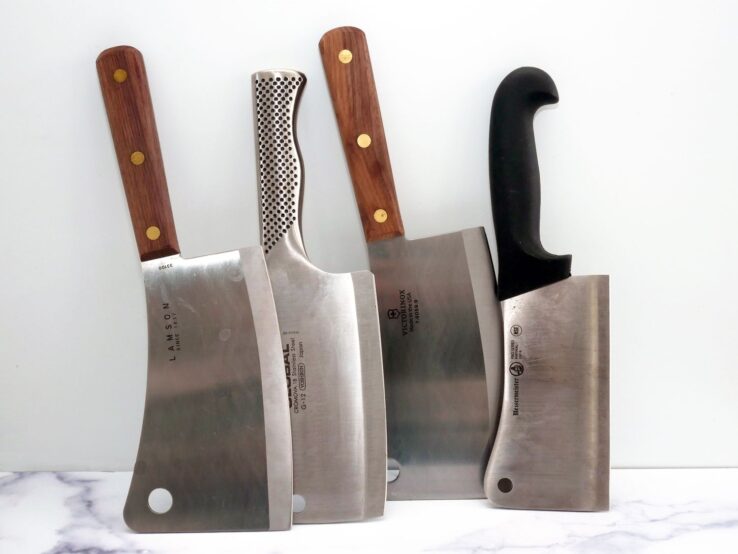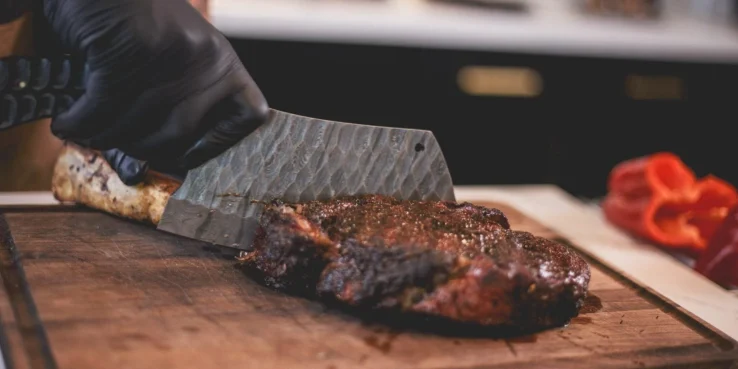When we think about one of the most useful tools in a kitchen, a cleaver often comes to mind. Traditionally, this heavyweight, broad-bladed knife is widely acknowledged for its ability to chop, dice, and mince the ingredients with precision and ease. However, the cleaver’s role extends far beyond just chopping and slicing, making it an undeniable superstar in the culinary world.
By exploring lesser-known but equally effective ways of using this multipurpose tool, we can unlock new dimensions of our culinary skills. This article will discuss the remarkable versatility of the kitchen cleaver beyond conventional practices. From acting as a meat tenderizer to surprisingly dicing frozen butter, the cleaver can smoothly shoulder multiple operations, emerging as a cook’s best friend in the kitchen.
Uncommon Cooking Practices
The versatility of a kitchen cleaver shines bright when we enter the world of uncommon cooking practices. An excellent example of its unconventional usage is its role as a meat tenderizer. Mallets or specialized tenderizers are used for softening the meat. However, the flat side of a cleaver makes for a superb DIY tenderizer, especially when you don’t have a specific tool at hand. A few gentle pounds on your steak or poultry with the cleaver’s broadside can make your meat tender without a mallet.
Crushing garlic and similar food items is another clever use of this heavy-duty tool. A quick whack with the side of the cleaver can easily pulverize garlic cloves, making them ready for sautéing, marinating, or adding to sauces. The broad flat side can be effectively used to smash ingredients like ginger, cherry tomatoes, and olives, making them easier to peel or prepare for further cooking steps.
Using the Cleaver in Baking
Though perhaps unconventional, the cleaver can also play a significant role in baking. When precision cutting of nuts or dried fruits is required for recipes like cakes or cookies, a cleaver is an excellent alternative to regular cutlery. Due to its substantial weight and large blade, it can chop even the toughest nuts or hard-dried fruits into tiny, fine pieces. It is especially useful when preparing large quantities, substantially reducing prep time.
Another fascinating baking use of a cleaver involves frozen butter. Often, recipes require small pieces of cold butter to be incorporated into the dough for a flaky, tender result. Here, the cleaver becomes a baker’s best friend. Its heavy-duty and sharp edge can neatly dice frozen butter, ensuring consistency throughout the dough. The blade’s broad surface helps in transferring chopped butter directly into the mixing bowl, keeping your hands clean and the butter cold.
The Cleaver as a Quick Kitchen Scale

Source: nytimes.com
The hefty blade of a kitchen cleaver can also serve as a quick kitchen scale under certain circumstances. With some practice and a keen sense of estimation, you can learn to gauge the weight of your produce by balancing it against the weight of your cleave. This application is particularly useful when you’re trying to implement portion control or when you lack a proper kitchen scale at hand.
By getting accustomed to the weight of your cleaver, you could compare it by holding your produce in one hand and the cleaver in the other. Bear in mind, though, that this method may not provide exact measurements but could offer a rough estimate. Hence, this method can be a handy trick in a pinch, particularly handy when you are trying to balance the ratio of ingredients in your recipes.
The Cleaver as a Scooping Tool
The kitchen cleaver can also serve a very helpful purpose as a scooping tool. Its large, flat blade is perfect for conveniently transferring chopped vegetables, herbs, or other ingredients from the cutting board to the pan, pot, or bowl. This not only reduces the use of additional utensils but also minimizes mess and potential food waste by conducting a smooth transfer of ingredients.
Who needs an extra spatula or scoop when you have a cleaver at hand? With its wide surface area, lifting and moving large quantities of food becomes a breeze. The sturdy handle provides a firm grip, allowing you to handle even heavier ingredients with confidence. Remember to use the blunt edge and not the sharp edge for scooping to avoid potential injury or damage to your utensils and pots.
Using the Kitchen Cleaver for Non-food Tasks

Source: seriouseats.com
A kitchen cleaver can also serve numerous non-food-related tasks in the kitchen. For instance, it can double up as a bottle opener. If you ever find yourself without a bottle opener, the back end of a cleaver’s handle can be used to pop off bottle caps with a little leverage. This convenient hack can come in handy during parties or gatherings when bottle-openers tend to mysteriously vanish.
The blunt side of a cleaver can be employed to break up large chunks of ice. This can be particularly useful when preparing chilled drinks or needing crushed ice for various culinary purposes. Remember to use the blunt side and not the sharp edge to avoid damaging your cleaver or hurting yourself. Always ensure to exercise caution while using the cleaver for such tasks, keeping safety as a prime consideration.
Kitchen cleavers showcase remarkable versatility, extending far beyond their regular function of chopping and slicing. By exploring these unconventional uses, home cooks can elevate their culinary skills and make their time in the kitchen more efficient and enjoyable.





